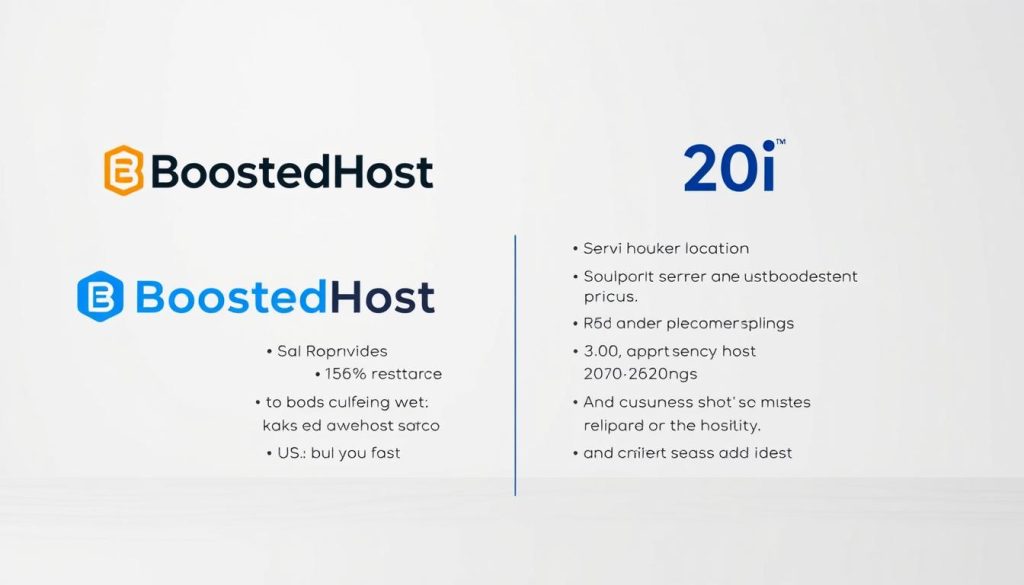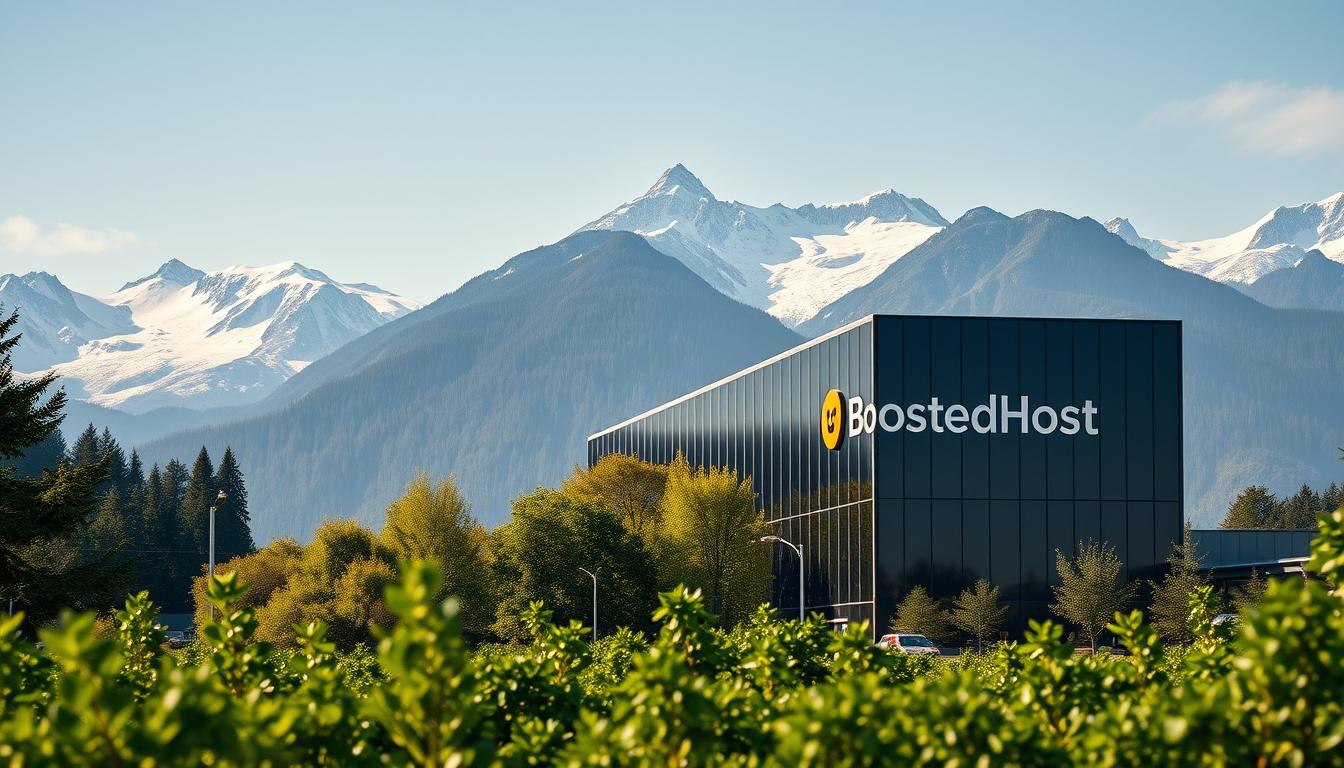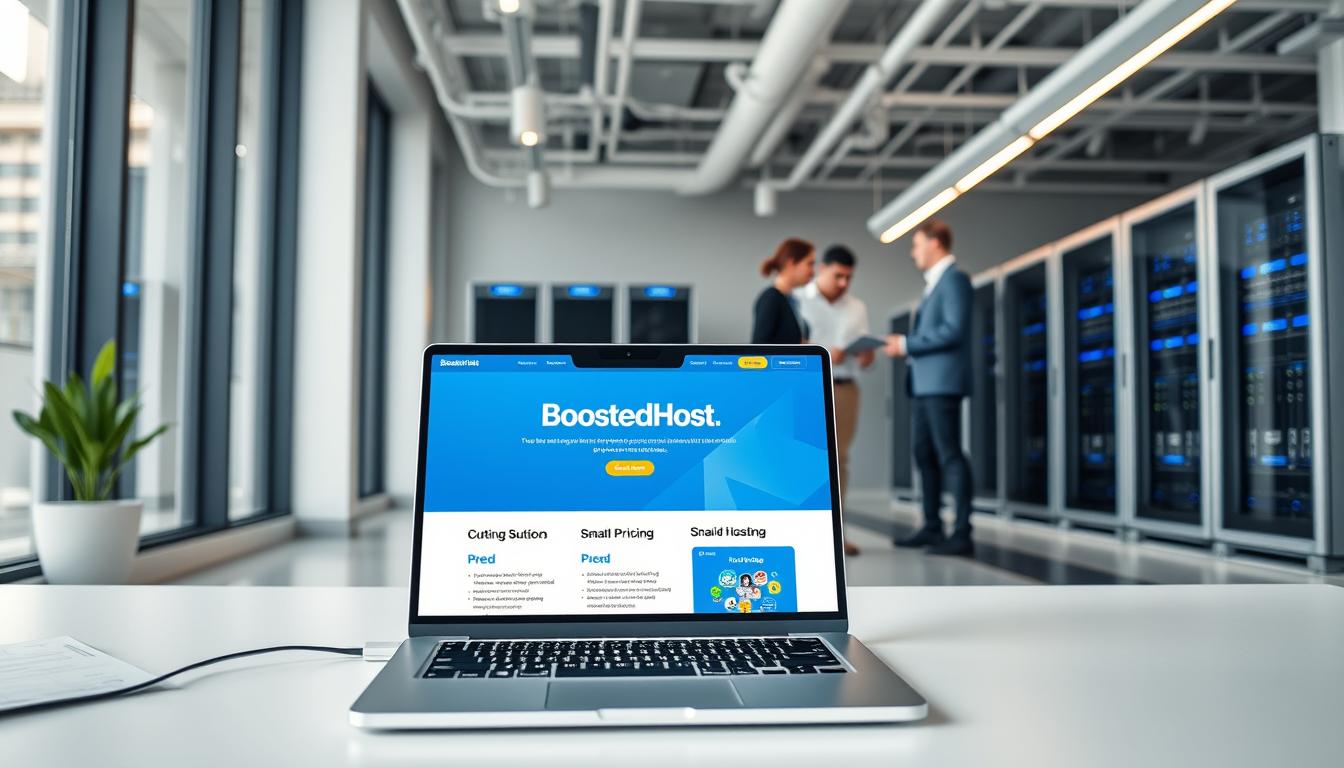We know the stress of choosing a host when your site carries your livelihood. We have sat in that chair—watching a slow page cost a sale, or an outage steal a morning’s revenue. This guide is our promise to cut through hype and deliver clear, usable answers.
We compare two major options for U.S. businesses with a focus on what truly matters: performance, uptime, security, transparent price, and responsive support. Our checks mix real-world tests, industry reviews, and feature audits.
Expect a fair look at LiteSpeed servers, CDN reach, sub-200ms TTFB, and autoscaling architectures. We explain how speed and stable server resources protect revenue and improve customer experience.
Our goal is practical: help SMBs, agencies, and eCommerce owners pick the right plan and control panel for their growth stage. We’ll call out where each provider shines and where one delivers measurable edge in web hosting.
Key Takeaways
- We focus on outcomes that matter to U.S. businesses: speed, uptime, security, and support.
- Raw speed and uptime give clear SEO and conversion benefits.
- Transparent pricing and included features can cut long-term costs.
- Autoscaling offers resilience; LiteSpeed and CDN deliver consistent speed wins.
- Our verdict highlights best fits by business size and technical needs.
How we tested and what matters in a business host in 2025
Our lab simulates real-world traffic, sudden spikes, and daily operations that matter to businesses. We measure TTFB and full-page load under concurrent connections. Then we track uptime from multiple regions across many days.
We rank providers by performance, predictable plans, and transparent price signals. Tests include caching and CDN effects, automated backups, SSL defaults, and firewall behavior. We also record control panel workflows to see how they save the team time.

We compare autoscaling cloud hosting against optimized single-server setups. That reveals which approach holds steady during traffic spikes. Security checks cover daily backups, DDoS protection, and malware tools so recovery is fast.
“We repeat every test and document settings so results are reproducible and actionable.”
- Simulate concurrent customers and measure TTFB + end-to-end load.
- Assess panel control and one-click staging for faster workflows.
- Score managed hosting and shared hosting on security defaults and recovery.
- Compare plan limits, upgrade paths, and true long-term costs.
- Cross-check hands-on results with independent reviews to spot patterns.
BoostedHost vs 20i: quick comparison for U.S. businesses
Here’s a rapid side-by-side that highlights what matters most for U.S. businesses choosing hosting today.

At-a-glance verdict: speed, uptime, features, and support
Verdict: One provider wins on raw speed and consistent uptime thanks to LiteSpeed and sub-200ms global TTFB. They also include malware protection, daily backups, free SSL, a global CDN, and fast support that resolves most requests in minutes.
The other counters with autoscaling cloud architecture, StackCache, free CDN, unlimited migrations, and deep WordPress tooling. Pricing is clear on both, though one uses a $1 first-month promo for annual signups.
Who each host fits best: individuals, SMBs, agencies, and eCommerce
- Individuals & startups: Orbit AI speeds launch for new sites; the entry plan is affordable for solo projects.
- SMBs: Global CDN and multi-region servers keep customer experiences fast nationwide; panel staging helps iterative updates.
- Agencies: Flexible plans and performance headroom suit portfolios; unlimited migrations ease onboarding.
- eCommerce: LiteSpeed caching and low TTFB help conversions; autoscaling protects against traffic spikes.
Performance and uptime: LiteSpeed power vs autoscaling cloud
Performance and uptime drive real results — they determine whether a sale completes or a page loses a visitor. We test real site loads and measure time-to-first-byte, full load, and resilience under spikes.
Speed fundamentals and TTFB
The LiteSpeed stack delivers consistent sub-200ms global TTFB. That low latency helps pages render faster and boosts SEO signals.
By contrast, 20i uses StackCache to auto-accelerate WordPress and reported 41ms in some tests. Both approaches cut render time for visitors.
Uptime discipline and multi-region servers
One provider maintains a 99.99% uptime average across USA, Europe, and Asia. Multi-region servers reduce single points of failure.
Daily backups, malware protection, and free SSL add resilience. The result is fewer recovery events and steadier business continuity.
Caching, CDN, and load handling
Edge CDN plus tuned caching keeps load times low for U.S. audiences. Autoscaling cloud handles sudden throughput increases by spreading work across servers.
We stress-test concurrent users. LiteSpeed plus edge caching holds latency low. Autoscaling keeps sites online during flash traffic.
“If you want predictable low response time, prioritize a tuned server stack; if you face irregular spikes, choose elastic cloud capacity.”
- For WordPress & WooCommerce: low TTFB improves checkout flow; autoscaling protects flash sales.
- For distributed teams: multi-region servers and CDN reduce regional lag.
Pricing and value: transparent plans and included features
Understanding plan limits and renewal rules is the best way to avoid budget shock with web hosting.
We found one provider offers clear price pages with no hidden fees and bundles essentials—free SSL, daily backups, malware protection, and a global CDN. That reduces the need to buy add-ons later and keeps total cost stable.
Clear pricing vs intro promos
Another provider lists Personal $7.99, Professional $19.99, and Unlimited $59.99 per month, with a $1 first month on annual billing. There is a 30-day money back guarantee and unlimited migrations on all plans.
Plan tiers and limits
Choose a plan that matches sites, storage, and bandwidth needs. For agencies, unlimited migrations speed consolidation. For small teams, bundled security and CDN save money over time.
| Plan type | Key limits | Included value |
|---|---|---|
| Entry | 1 site, 10 GB SSD, 50 GB BW | SSL, backups, CDN |
| Growth | 10 sites, 100 GB SSD, 500 GB BW | SSL, backups, malware protection |
| Unlimited | Unlimited sites/storage/bandwidth | All bundled features + migrations |
Refunds, migrations, and procurement
Both providers include a 30-day money back option so you can test performance in production. We recommend documenting must-haves—CDN, backups, control panel features—and comparing true renewal price before you commit.
Features and tooling: control panel, AI builder, and developer stack
A solid control experience changes how fast you ship updates and fixes. We look at control surfaces, security defaults, and developer tooling that save time for teams.
Security first: Both providers include free ssl, daily backups, active firewalls, and DDoS safeguards by default. That baseline reduces risk without extra purchases.
Malware protection differs slightly. One includes automated recovery flows. The other adds automatic and on-demand malware scanning and 2FA options for tighter account control.
AI and site setup: The Orbit AI website builder can produce a production-ready site in under five minutes. Teams get content, layout, and structure fast, so launches stop being a slog.
Panels are tidy and task-focused. Each panel supports one-click staging, plugin/theme control, and migrations. my20i control tools give granular staging and management for WordPress workflows.
Developer stack: PHP, Node.js, and Python support runs alongside WooCommerce-ready server configs. That combination fits APIs, headless builds, and commerce sites.
“Cleaner control and automated tooling mean less time on ops and more on growth.”
- Security baseline: free ssl, backups, DDoS, firewalls.
- Performance tools: LiteSpeed cache or StackCache plus CDN.
- Workflows: staging, multi-site templates, reseller hosting friendly options.
Support, reviews, and customer experience
Fast, reliable help shapes the day-to-day experience of any business running a live site. We focus on responsiveness, first-contact clarity, and the tools that let teams self-serve routine fixes.
24/7 expert support: responsiveness that resolves most requests in minutes
24/7 expert support matters for revenue. One provider promises round-the-clock engineers who resolve most tickets in minutes. That speed prevents small issues from becoming full outages.
We value clear ownership on tickets. Fast first responses and precise fixes cut churn and save hours for your team.
Customer sentiment: Trustpilot reputation and business-grade SLAs
Public reviews tell a story. The other provider shows ~1,500 Trustpilot reviews at 4.9/5 and deep documentation. That level of feedback signals consistent customer satisfaction and robust onboarding tools like unlimited migrations.
“Documentation depth and transparent SLAs reduce surprises during growth and migrations.”
- Always-on help reduces downtime and protects conversions.
- Strong docs let your team resolve common tasks without tickets.
- Migration support eases consolidation across servers and domains.
| Support trait | Strength | Business benefit |
|---|---|---|
| Response time | Minutes (engineer-led) | Less downtime, faster restores |
| Public reviews | ~1,500 reviews, 4.9/5 | Confidence in reliability |
| Documentation & tools | Deep knowledge base, unlimited migrations | Simpler onboarding and control for teams |
For a direct conversation about support and migrations, contact our team at customer support.
Conclusion
Decide with confidence: choose the hosting plan that matches your load patterns and budget.
For U.S. businesses we recommend performance-first setups when predictable performance and sub-200ms TTFB matter. If you prioritize elasticity and mass moves, pick the provider with autoscaling and unlimited migrations.
Both options include free ssl, daily backups, and malware scanning. That security parity means your choice comes down to response times, control panel workflows, and clear price across renewal.
Test before you commit. Use the 30-day day money back window to validate load and regional servers, check free domain and DNS cutover steps, and confirm the panel control fits your team.
Map traffic peaks, required regions, and compliance needs. Then align your web hosting plans and plan selection so migrations and growth run smoothly.
FAQ
What are the biggest differences in control panels between the two hosts?
We saw one provider use a custom, streamlined control panel focused on site workflows and staging. The other uses the my20i control panel with granular domain and DNS tools. Both give file access, PHP settings, and logs — but choice comes down to whether you prefer simplified management or deeper control for developers.
Do both hosts include free SSL and daily backups?
Yes. Both include free SSL certificates and automated daily backups. One vendor also bundles malware scanning and firewall rules in their security suite. That reduces risk and lowers total cost of ownership for business sites.
How does performance compare for WordPress and WooCommerce stores?
Performance varies by plan and configuration. One platform leans on LiteSpeed with sub-200ms TTFB for cached WordPress sites. The other offers autoscaling cloud hosting with StackCache CDN-like acceleration. For high-traffic eCommerce, autoscaling helps with spikes; LiteSpeed often gives faster steady-state page loads.
Which host offers better uptime and reliability?
Both aim for high availability. One advertises a 99.99% track record with multi-region data centers. The other uses regional cloud clusters and autoscaling to maintain uptime during peaks. Look at SLAs and historical uptime data for the specific data center you’ll use.
Are there free domains or migration services included?
Some plans include a free domain for the first year. Unlimited migrations are offered by one provider on certain tiers — we recommend confirming which plans include professional migration and whether DNS changes are handled for you.
How transparent are the pricing and renewal fees?
Pricing is clear on both sites, but intro promos may mask renewal rates. Compare initial price, renewal, and add-ons like extra CPU, premium support, or dedicated IPs. Factor in money-back windows and migration help when calculating first-year costs.
What developer tools and stacks are supported?
Both hosts support common stacks — PHP (multiple versions), MySQL, and WordPress. You’ll also find support for Node.js and Python on certain plans. One provider exposes more developer features in the control panel: SSH, Git, staging environments, and cron jobs.
How effective are built-in caching and CDN options?
Built-in caching and a global CDN are offered by both. One uses a global CDN with edge caching plus LiteSpeed caching plugins. The other includes its free CDN and proprietary caching layers optimized for WordPress. For global audiences, pair the host CDN with an external CDN if needed.
What support channels and response times can customers expect?
Both provide 24/7 support via chat and ticketing; phone support may vary. Many queries are resolved within minutes for routine issues. Look for business-grade SLAs or priority support options if uptime and fast resolution matter to your operations.
Are there reseller or agency hosting plans available?
Yes. Both vendors offer reseller and agency-style plans with multiple site management, white-label tools, and bulk resource allocations. These plans are aimed at agencies that need control panels, client billing, and staging workflows.
How do money-back guarantees and trial periods work?
Standard offers include a 30-day money-back guarantee on most shared and managed plans. Trial periods and refund policies differ for specialized or add-on services. Verify the exact refund terms before purchase to avoid surprises.
Is malware scanning, DDoS protection, and firewall included?
Security bundles typically include malware scanning, basic DDoS protection, and web application firewalls. Advanced threat removal or managed security may cost extra. Check whether real-time scanning and automated cleanup are part of the plan you choose.
Which host is better for scalability and handling traffic spikes?
For elastic scaling, autoscaling cloud hosting is superior — it adds compute and memory during traffic surges. LiteSpeed setups handle high concurrency well for cached workloads. Your choice depends on predictable vs unpredictable traffic patterns.
Can I run custom applications like Node.js or Python APIs?
Yes — both hosts support custom apps on certain plans. Node.js and Python are available on developer-focused tiers. Confirm runtime versions, long-running process support, and background worker capabilities before committing.
How do domain management and DNS features compare?
Domain tools and DNS management are robust in both control panels. One platform includes integrated domain registration and DNS control with advanced record editing. The other relies on standard DNS management tied into the hosting dashboard — both are fine for most business needs.
What backup retention and restore options are provided?
Daily backups are common, with retention windows that vary by plan. Some tiers include on-demand restores and longer retention for a fee. We recommend verifying how quickly restores complete and whether backups cover databases and files separately.
Do either provider offer an AI website builder or site templates?
Yes. One platform includes an AI Website Builder that can generate a professional site in minutes. Both offer templates and site builders to speed deployments. These tools are useful for small businesses and agencies needing quick launches.
How do I choose between lower price and higher performance?
Balance cost and requirements. Choose a higher-performance plan if you need fast TTFB, strong caching, or guaranteed CPU for eCommerce. If budget and basic uptime are the priority, pick a mid-tier plan and scale up when traffic grows.
What SLAs or guarantees should I look for in a business host?
Look for uptime SLAs (99.9%+), response-time commitments for support, and credits for service failures. Also check backup guarantees, data center locations, and disaster recovery processes to ensure business continuity.




